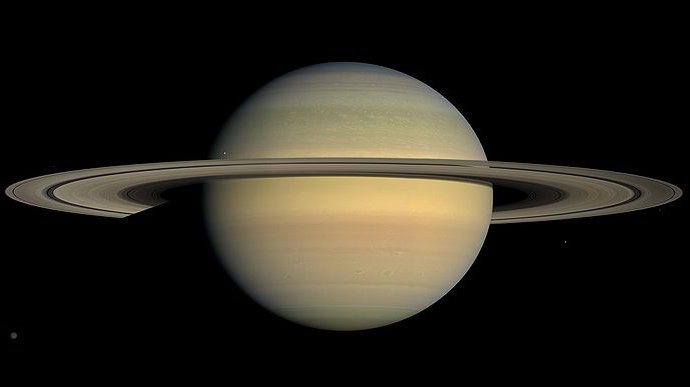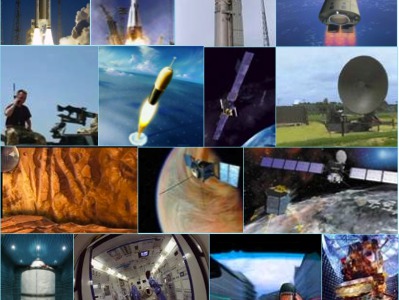Author Archive
Public Lecture by Dr Simon Mitton
Thursday, May 21st, 2015
The Royal Astronomical Society has made videos of some of its public lectures available to view on their website, including a talk by Dr Simon Mitton entitled How geometry has guided cosmology: from the Babylonians to Einstein and beyond.
We’re hoping to welcome Simon as a speaker this autumn, but in the meantime, you might enjoy this previous talk of his!
Twentieth Anniversary Celebrations
Wednesday, August 20th, 2014
We are very pleased to announce that the celebrations for the 20th Anniversary of Papworth Astronomy Club, taking place on 11th December (note that this is the second Thursday of the month rather than the usual day!), will include a talk by Professor Malcom Longair of Cavendish Laboratory, who will be speaking about “Fundamental Physics, Astronomy and Cosmology”.
Upcoming Meetings: August-December 2014
Saturday, August 2nd, 2014
Wednesday 6th August
As usual, we kick off the new season with the traditional picnic. We may be inside or outside the Vinter Room, depending on the weather. Note that this meeting is next week – apologies for the short notice!
Wednesday 3rd September
Dr Patricia Fara will be talking about Newton and Newtonianism. She is a science historian at Clare College and has appeared on Melvyn Bragg’s Radio 4 programme “In Our Time”.
Wednesday 1st October
Speaker meeting. Subject and speaker to be confirmed nearer the date.
Wednesday 5th November
Speaker meeting. Subject and speaker to be confirmed nearer the date.
Wednesday 3rd December
Twentieth anniversary celebration meeting! More details to be confirmed as they become available.
Upcoming Meetings: January-May 2014
Friday, December 20th, 2013
8th January 2014
(Note that this is the second Wednesday of the month, not our usual date.) Ed Zanders recently returned from Australia and will give a presentation called “A Northern Sky Watcher’s View of the Southern Stars”. This is an account of the constellations that are invisible (or barely visible in the UK), but are high in the southern skies. Also, he will give a history of observations in the southern hemisphere including a description of the Sydney Observatory, which looks very similar to the old observatory in Cambridge.
5th February 2014
Professor Tom Marsh from the Astronomy and Astrophysics group at the University of Warwick will give a talk about “White dwarfs, Supernovae and Gravitational Waves.”
5th March 2014
Dr. Christopher Lester from the Cavendish Laboratories at Cambridge University will give us a presentation on the work of CERN and, in particular, the Large Hadron Collider (LHC).
2nd April 2014
Rob Sandford from the University of Warwick will present a talk titled “The Second Space Race?”. This will include an overview of how space exploration and the space industry are rapidly changing, thanks to new countries joining in and private companies working to lower the cost of access to space.
7th May 2014
Our guest speaker will be Dr. Robin Catchpole from the Institute of Astronomy in Cambridge. The subject will be confirmed later.
Upcoming Meetings: September-December 2013
Friday, August 9th, 2013
4th September 2013
Dave Green from Cambridge University will give a talk called “Observing the radio universe”. He will review the development of radio astronomy. His talk will cover advances made in the technology used in single-dishes and arrays, including the development of interferometry and aperture synthesis. He will also show a variety of results made with current state of the art radio telescopes (including with the Very Large Array in the US, and the Giant Meterwave Radio Telescope in India).
2nd October 2013
Dr Mike Leggett will give a talk entitled “Astronomy in the Ancient World”.
6th November 2013
Dave Roberts will lead a night sky observing session. There will be an alternative programme if the weather is poor.
4th December 2013
Sheridan Williams FRAS, director of the British Astronomical Association’s computing section, will talk about the mechanics of eclipses.
Upcoming Meeting List: February-May 2013
Thursday, January 24th, 2013
6th February 2013
The observing evening originally planned for December has been rescheduled for February. Dave Roberts has kindly volunteered to lead this session — if the weather is unfavourable for observing he will be giving an indoor presentation about the basics of observing.
Wednesday 6th March
A talk by Professor Paul Hewett, Director of the Institute of Astronomy in Cambridge. Paul has promised more details nearer the time, but his areas of interest include cosmology and fundamental physics, galaxies and active galactic nuclei.
Wednesday 3rd April
Andreas Schroeer from the Open University will give a presentation on coordinate systems. Andreas is also proprieter of AstroMedia UK and his talk will be illustrated with demonstrations of diverse sundials, a sun simulator, and an orrery that AstroMedia sells.
Wednesday 1st May
Professor John Zarnecki will give a talk called “Landing on a Comet”. John is responsible for the PTOLEMY instrument on the Rosetta mission to comet 46P/Wirtanen. This meeting will be the 2013 Gordon Carter Memorial Lecture.
Upcoming Meetings for 2013
Thursday, December 27th, 2012
2nd January 2013
Nik Szymanek, the renown astrophotographer, will give a talk on photographing the night sky and show some of his images. If you aren’t familiar with Nik’s work, take a look at his website. Papworth members who participated in the Faulkes telescope session might be interested in Nik’s Faulkes images! As in previous years, we are planning to link this meeting with the BBC’s Stargazing Live series, which will return in January. No word yet on whether the Beeb will be providing goodies again this time!
6th February 2013
The observing evening originally planned for December has been rescheduled for February. Dave Roberts has kindly volunteered to lead this session. More information will follow nearer the time.
Later
The three meetings after these will be on 6th March, 3rd April and 1st May. More details will be available shortly.
Michael Foulkes — Saturn
Wednesday, April 4th, 2012

Wednesday 4th April
Being the head of the Saturn section at the British Astronomical Association, it seemed natural that Michael Foulkes should deliver April’s talk on the beautiful ringed planet. Saturn is probably the best loved object in the solar system, with its ring system visible in even the smallest telescope. Huygens was the first to observe this in the 17th century and a spacecraft that visited Saturn’s largest moon Titan was named after him. Michael described some of the features of Saturn’s orbit and the way the position of the Sun’s shadow changes according to its position relative to Earth. Because of the eccentricity of the plane of the rings relative to the planet’s orbit, ring system can become essentially invisible in certain years. Saturn is largely made up of hydrogen and has surface cloud features, but is not nearly as active as Jupiter. Nevertheless, storms have been detected on the planet even with small telescopes. The most famous was the Great White Spot, discovered by Will Hay the 1930s comedian. Michael finished his talk with a survey of the ring system and the main satellites, including Enceladus, which may have liquid water beneath its surface and therefore the potential for life. An informative talk which made us want to go out and see the planet for ourselves (it is currently in Virgo).
The Gordon Carter Memorial Lecture: Dr Andrew Norton – “Gamma Ray Bursts, a Cosmic Detective Story”
Monday, March 12th, 2012

Monday 12th March 2012
Dr Andrew Norton, Senior Lecturer in Astrophysics at the Open University, was invited to present the first Gordon Carter Memorial Lecture, which will become an annual event commemorating the founder of the Papworth Club who BeppoSAX satellite provided observations of GRBs that allowed spectral measurements to be made and therefore an estimate of the redshift of the object producing them. It turned out that these objects were about 6 billion light years away, meaning that they were exploding during the early history of the universe.
Some working model was required to account for the observations and the theory of how much energy could be produced by an object of given mass. Currently there may be two ways of producing the intense beam of radiation that emerges from these objects (as opposed to a uniform distribution). There may be pairs of neutron stars that orbit closer and closer to each other until they collide and explode, and there may be hypernovae that represent the end of early stars containing hydrogen and helium, but no other elements. Further observations are being made using the Swift space telescope that can detect the GRBs and then use other imagers to detect the optical and X-ray counterparts. Andrew commented that the spacecraft is designed to send a text message to the controlling astronomers on earth so they can alert the world’s observatories to these important events.
This was a worthy inaugural lecture that was much appreciated by the Papworth audience.
Katie Hassell – “Astrium”
Wednesday, February 1st, 2012

Wednesday 1st February 2012
This month’s talk was by Katie Hassell, a scientist from Astrium based in Stevenage. This branch of the multinational EADS group is familiar to us through a past visit by their head of publicity and a visit to the factory by some of our members a few years ago.
Katie described the company and showed an interesting picture of the Stevenage site in the 1950s which was basically a field, later developed into a site for producing spares for the Comet jet liner. Astrium has been involved in the construction of over 60 telecommunications satellites, plus a varied array of astronomical space probes, including Herschel, Planck and the Hubble telescope. A number of major projects are in the pipeline, including the Gaia interferometer, BepiColombo probe for Mercury, ExoMars and the space interferometer LISA.
There was an extensive Q&A session where Katie was asked about the practicalities of satellite construction and “qualification”. The latter is the process of ensuring that each component will operate to specification for a given period of time, maybe for decades. Given the harshness of interplanetary space, this is a big challenge. The extremes of temperature to which components are subjected, (according to whether they face towards or away from the sun), means that a lot of effort goes into devising thermal protection.
A very interesting evening, which makes you marvel at the skill (and expense) involved in making these devices work in space.
More information can be found at ESA’s website.